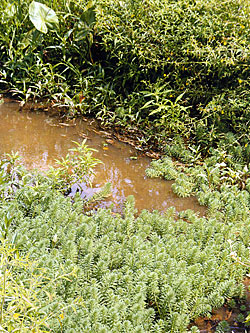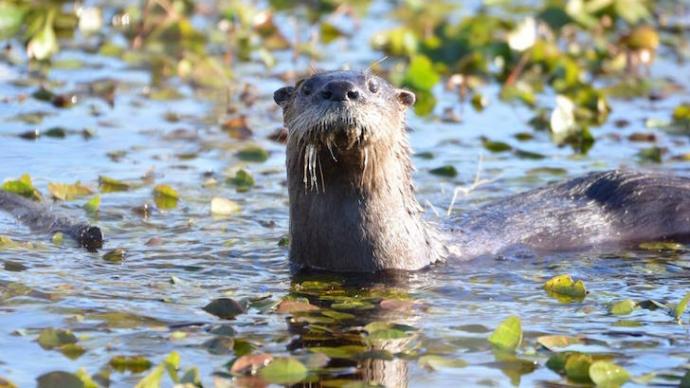
You hear the term 'wetland' often. Hurricane Katrina demolished thousands of acres of wetlands. The BP oil spill fouled its share, too. Just exactly what is a 'wetland' and what's the big deal about them?
According to the Environmental Protection Agency (EPA) and regulatory purposes from the Clean Water Act, 'wetlands' are "those areas that are inundated or saturated by surface or groundwater at a frequency and duration sufficient to support, and that under normal circumstances do support, a prevalence of vegetation typically adapted for life in saturated soil conditions. Wetlands generally include swamps, marshes, bogs and similar areas."
That's a pretty broad definition. That could define a leaky spot below your dam. It could describe a seasonal creek that grows plants which must keep their feet wet near the stream potholes. It could mean most any low spot near you where water stands part of the year.
Biologically, what do wetlands mean? What do they do?
Wetlands are moist soil areas typically where there's a transition from dry to wet to standing water. Wetlands are nature's filters, playing a significant role in seizing extra nutrients coming from point sources to capture and use those nutrients in some type of greenery. One of the consequences of this natural filtration system is that wetlands play host to all kinds of wildlife. They harbor small mammals, invertebrates, birds, reptiles, amphibians and countless creatures of all sizes. Those living things add to the diversity of that ecosystem and invariably play a role in the balance and success of surrounding ecosystems.
We like wetlands.
One piece of advice. In today's world, when someone says the word "wetlands" to John Q. Pondmeister, that landowner tends to tense up, wince and purse his lips as he says, "Shhhh!" Why is that? It's because of the regulatory stigma associated with the powerhouse agencies charged with keeping their thumbs on landowners. It's about those enforcers who often have a tendency to discard common sense in pursuit of some vague interpretation of a law designed to keep our precious water resources pristine and clean.
Don't let that stigma cause you to put your wetlands on the red-headed stepchild list, so to speak. If you have a wetland, cherish it and pay attention to it. Good wetlands are preserving the integrity of the land where they sit. Good wetlands have a variety of plant life, typically plants native to that part of the planet that act as a safe harbor for a big portion of nature and its biology.
If you have a wetland, pay attention to it. Study the plants. Watch over the course of the seasons, how they ebb and flow, grow and mature. If you have species that tend to dominate, manage them. Give your wetland a chance to develop in a healthy, balanced way.
Well balanced wetlands are an asset. In many cases, wetlands adjacent to a lake filter incoming waters to help balance the environment of the lake next to them.
Look at your wetlands with a degree of reverence as you learn about how they work. Look at them with the same energy you use to manage your pond.
I'm not telling you all wetlands are pristine areas deserving of praise. Nor am I telling you how to manage your soggy bottom areas. The take home point of this article is to learn, study and think about those areas. Don't just run up to the farm store, by some herbicide and start annihilating plants just because you don't think you like them. Be thoughtful and careful.
If you pay attention to your wetland areas, you'll begin to see the uniqueness of that ecosystem. Once you understand how it works, then start thinking about how to make it better.
Reprinted with permission from Pond Boss Magazine




